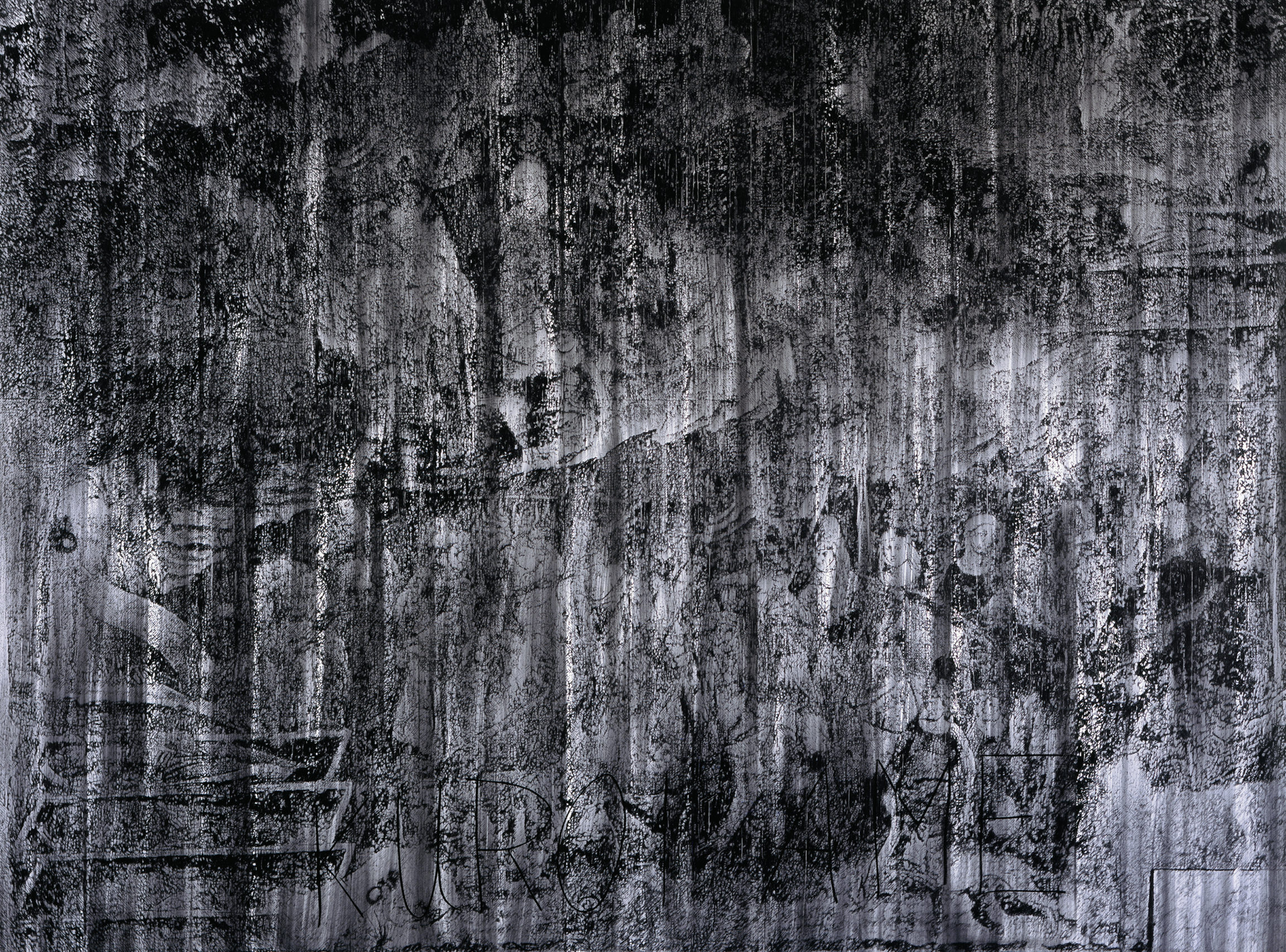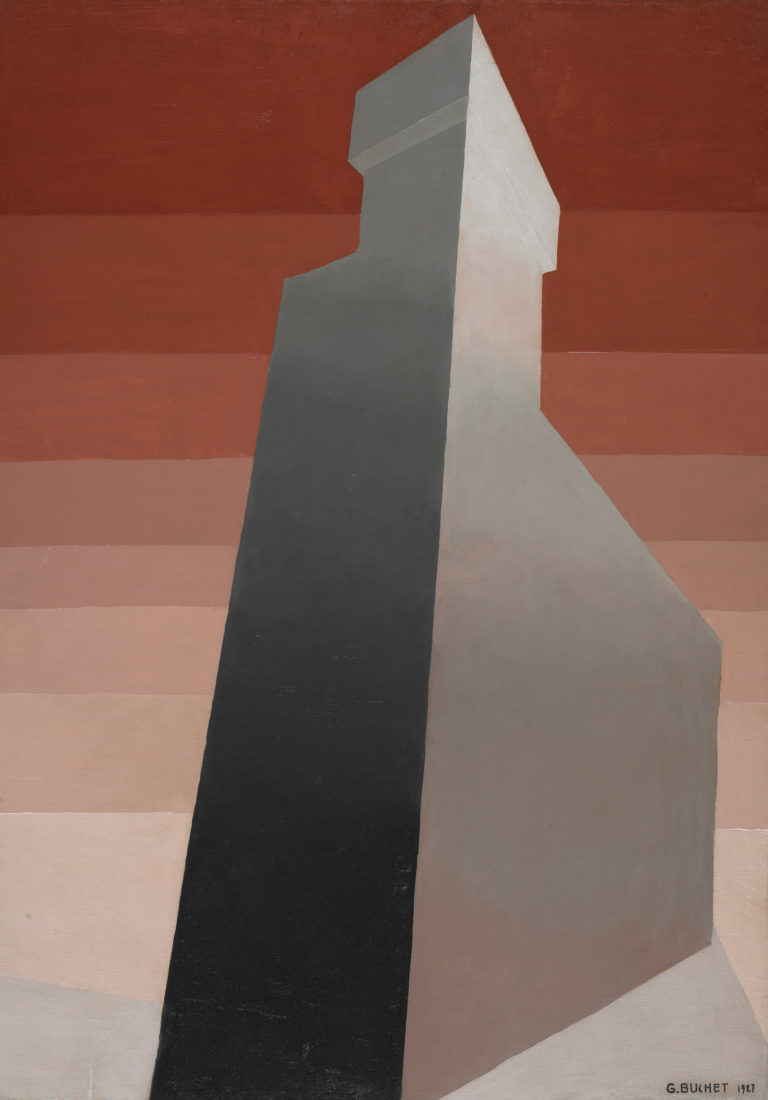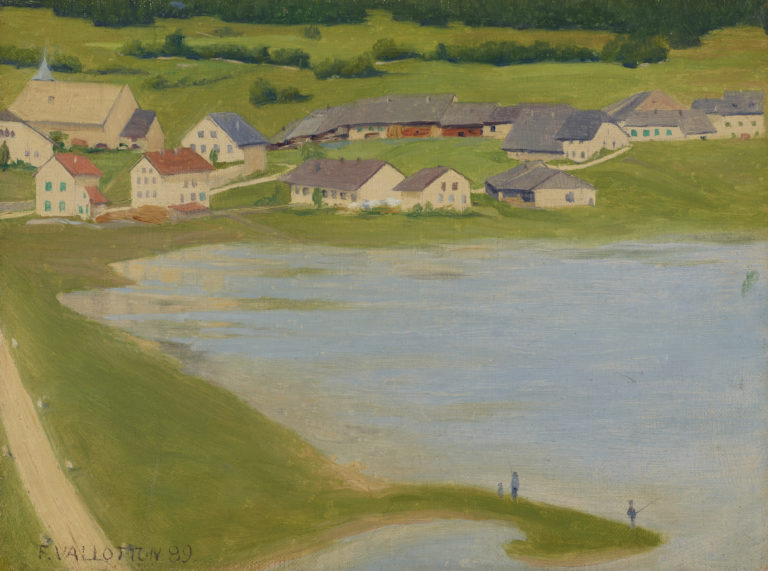Bibliography
Julie Enckell Julliard, Alain Huck. Les salons noirs, Zürich, Scheidegger & Spiess, 2015: [24] and 41.
David Lemaire, Alain Huck. La symétrie du saule, Geneva, Mamco, 2015: 29-32 and 185.
Bernard Fibicher, Catherine Lepdor and Sarah Zürcher, Hespérides, exh. cat. Lausanne, Musée cantonal des Beaux-Arts, Lausanne, 2009: 64-65.


![Edgar Degas, Danseuse s’avançant, les bras levés, jambe droite en avant (deuxième étude) (Dancer Stepping Forward, her Arms Raised, Right Leg Forward [second study]), c. 1885–90](https://www.mcba.ch/wp-content/uploads/2019/07/58_DEGAS_A_num4000_nr-768x1182.jpg)

Kuroi Ame II is part of the Salons noirs series of huge charcoal works begun in 2006. Alain Huck explores great human tragedies in the works, freely associating personal, literary, iconographic and historical references and superimposing different images.
‘Kuroi ame’, written in capitals in the bottom quarter of the drawing, means ‘black rain’ in Japanese. It is the title of a 1966 book by Masuji Ibuse recounting the lives of survivors of the 1945 Hiroshima bombing. The author describes the radioactive, ash-laden rain that fell after the atomic bomb was dropped on the city. In the foreground, Huck depicts the lashing rain with vertical sweeps of charcoal pigment using rags and brushes. The carbon black of the charcoal echoes the ashy, death-dealing rain. The spectator must peer through the ‘curtain’ to make out the underlying composition.
Beneath the layer evoking Hiroshima are open coffins contemplated by a cohort of horsemen. This is a reference to the left-hand side of the Triumph of Death (c. 1338–9), the right-hand side of the same work inspiring this work’s 2008 companion piece Kuroi Ame, held in a private collection. The fresco, now attributed to Buonamico Buffalmacco, was painted in Pisa shortly before the outbreak of the Black Death that ravaged Tuscany in 1348.
In juxtaposing eras, circumstances and memories of these tragedies, Huck offers a subjective reading of our human fate. The history of civilisation is seen as a succession of events striving to eradicate human existence, while at the same time preserving it despite the misfortunes that afflict us.